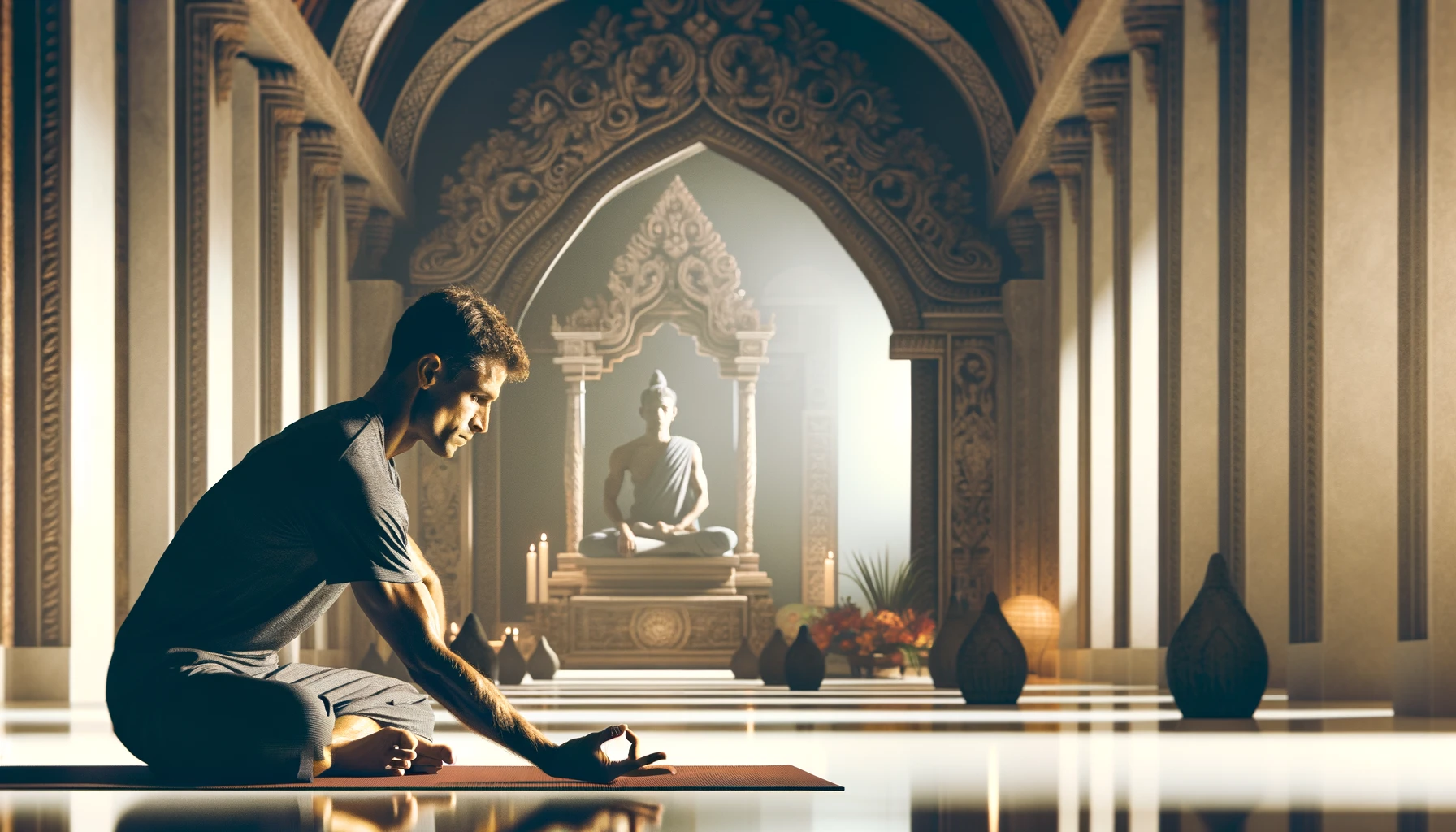Secrets of Ashtanga Yoga hold the key to a transformative journey towards physical and mental well-being. This step-by-step guide researchs into the intricacies of this ancient practice, offering a comprehensive roadmap for beginners and seasoned yogis alike. From mastering the foundational poses to exploring the philosophical principles that underpin Ashtanga Yoga, this guide aims to unravel the mysteries surrounding this dynamic and empowering form of yoga. Dive into the depths of your practice and discover the profound benefits that await on the mat.
Key Takeaways:
- Patanjali’s eight-limbed yoga system: Ashtanga yoga is based on the eightfold path outlined by the sage Patanjali, emphasizing ethical living, physical postures, breath control, and meditation.
- Focus on the breath: The primary focus in Ashtanga yoga is on synchronized breathing with each movement, known as vinyasa, which helps create a meditative flow and heat in the body.
- Series of asanas: Ashtanga yoga follows a set sequence of poses, starting with sun salutations and moving through standing, seated, and finishing poses, designed to build strength, flexibility, and concentration.
- Mysore style practice: Ashtanga yoga is traditionally taught in a self-paced, individualized manner called Mysore style, where students memorize sequences and practice at their own pace under the guidance of a teacher.
- Benefits beyond the physical: While Ashtanga yoga offers physical benefits such as increased strength and flexibility, the practice also fosters mental clarity, emotional resilience, and a deeper connection to oneself and others.
Understanding Ashtanga Yoga

The Eight Limbs of Ashtanga
Some practitioners might be familiar with the physical aspect of Ashtanga Yoga, but its roots go deeper into spiritual and mental practices. The Eight Limbs of Ashtanga, outlined by the sage Patanjali, form the foundation of this yoga system. These limbs include moral and ethical guidelines, self-discipline, physical postures, breath control, sense withdrawal, concentration, meditation, and spiritual realization.
Types of Ashtanga Series
The practice of Ashtanga Yoga is typically divided into several series, each with a specific focus and level of difficulty. The Primary Series, also known as Yoga Chikitsa, focuses on detoxifying the body and building a strong foundation. The Intermediate Series, or Nadi Shodhana, works on purifying the nervous system and opening the energy channels. The Advanced Series A, B, C, and D, known as Sthira Bhaga, aim to cultivate strength, flexibility, and grace.
- Primary Series: Establishes foundation and detoxifies the body.
- Intermediate Series: Purifies the nervous system and energy channels.
- Advanced Series A, B, C, D: Enhances strength, flexibility, and grace.
For instance, a practitioner may spend years mastering the Primary Series before moving on to the Intermediate Series. Each series is designed to prepare the body and mind for the challenges of the next level, ensuring a gradual and safe progression in practice.
Embarking on the Ashtanga Journey
Factors to Consider Before Starting
Ashtanga Yoga practice is a transformative experience that requires dedication and commitment. Before venturing into this rigorous form of yoga, there are several factors to consider. Firstly, assess your current physical fitness level to determine if your body is ready for the demanding practice. Secondly, understand the importance of consistency in practicing Ashtanga Yoga as it follows a specific sequence that builds upon itself. Lastly, be prepared for the mental discipline required to navigate through the challenging postures and sequences.
Recognizing the significance of these factors will help you set realistic expectations and stay motivated throughout your Ashtanga journey.
Preparatory Tips for Success
in Ashtanga Yoga are crucial for laying a strong foundation. Before you begin this intense practice, it is crucial to focus on building strength, flexibility, and endurance. Start incorporating yoga poses that target these areas to prepare your body for the demands of Ashtanga. Additionally, pay attention to your breath and cultivate a steady pranayama practice to support your movements. Lastly, establish a consistent routine that includes both physical and mental preparation to maximize your progress.
Thou shall approach your Ashtanga practice with patience and a growth mindset to overcome challenges and progress steadily.
There’s no shortcut on the path of Ashtanga Yoga. Success in this practice requires dedication, patience, and a deep understanding of your body and mind. Dive into your practice with an open heart and a willingness to learn from each experience. Embrace the journey ahead with a sense of curiosity and determination, knowing that each step brings you closer to self-discovery and transformation.
Tips for your Ashtanga journey: Consistency, patience, mental discipline, strength-building yoga poses, pranayama practice, and steady progress.
The Step-by-Step Ashtanga Experience
To unlock the secrets of Ashtanga Yoga, one must commence on a step-by-step journey towards physical and mental transformation. Here, we investigate into the comprehensive experience of Ashtanga Yoga that encompasses the Primary, Intermediate, and Advanced Series, offering a guide towards inner peace and well-being.
The Primary Series: A Detailed Walkthrough
Ashtanga Yoga’s Primary Series is the foundation of the practice, focusing on building strength, flexibility, and endurance. Beginning with sun salutations and moving through a sequence of standing, seated, and finishing postures, each asana prepares the body and mind for the more advanced series to follow.
The Intermediate and Advanced Series: Progressing with Patience
Progressing through the Intermediate and Advanced Series in Ashtanga Yoga is a profound journey that demands commitment and discipline. Each series builds upon the foundation of the previous one, challenging practitioners to deepen their practice and cultivate a sense of self-awareness.
Patience plays a crucial role in the practice of Ashtanga Yoga, allowing practitioners to progress gradually and safely. By embracing patience, one can avoid injuries, cultivate mindfulness, and experience the transformative power of this ancient practice.

The Ashtanga Practice Analyzed
Pros and Cons of Ashtanga Yoga
| Pros | Cons |
| Structured practice for discipline | High risk of injury if not practiced correctly |
| Improves strength, flexibility, and endurance | Can be physically demanding for beginners |
| Focuses on breath control and mindfulness | Pressure to progress quickly may lead to frustration |
| Traditional lineage with deep roots | Not suitable for individuals with certain health conditions |
| Emphasis on self-practice and self-discovery | Requires time commitment for consistent practice |
Refining Your Practice: Common Challenges and Solutions
There’s often a common challenge when practitioners face the need to balance progress with patience. It can be frustrating when you hit a plateau or face obstacles in mastering a particular pose. Plus, it’s crucial to listen to your body and not push beyond your limits, as this type of yoga can be strenuous. Seeking guidance from experienced teachers and modifying the practice to suit your individual needs can help overcome these challenges.
Summing up
Now armed with a deep understanding of the principles and practices of Ashtanga Yoga, readers can launch on a transformative journey towards physical, mental, and spiritual well-being. By following the step-by-step guide provided, individuals can unlock the secrets of this ancient practice and experience profound benefits in all aspects of their lives. Through dedication and commitment, one can tap into the power of Ashtanga Yoga to cultivate discipline, strength, flexibility, and inner peace. This comprehensive guide serves as a valuable resource for those seeking to explore the profound depths of Ashtanga Yoga and integrate its teachings into their daily lives.
FAQ
Q: What is Ashtanga Yoga?
A: Ashtanga Yoga is a traditional form of yoga that involves synchronizing breath with a progressive series of postures to produce internal heat and purify the body.
Q: What are the key principles of Ashtanga Yoga?
A: The key principles of Ashtanga Yoga include Vinyasa (breath-synchronized movement), Tristhana (three levels of attention), and the importance of the Ashtanga Yoga Chikitsa sequence.
Q: How is Ashtanga Yoga different from other types of yoga?
A: Ashtanga Yoga differs from other types of yoga in its emphasis on a specific sequence of postures, breath awareness, and internal energy locks known as Bandhas.
Q: What are the benefits of practicing Ashtanga Yoga?
A: The benefits of practicing Ashtanga Yoga include increased strength, flexibility, focus, and stress relief. It also helps to detoxify the body and calm the mind.
Q: How can one start learning Ashtanga Yoga?
A: One can start learning Ashtanga Yoga by finding a qualified teacher, committing to a regular practice, and gradually building up strength and flexibility through consistent effort and dedication.

